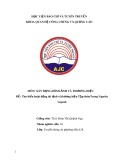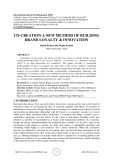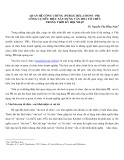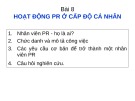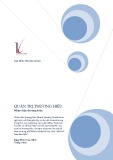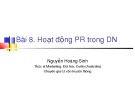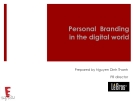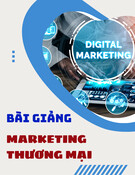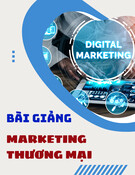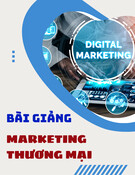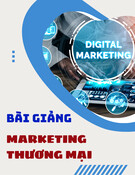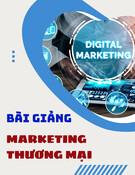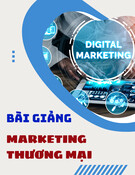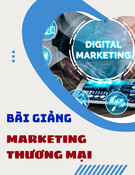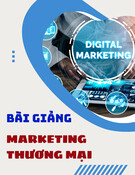
http://www.iaeme.com/IJM/index.asp 13 editor@iaeme.com
International Journal of Management (IJM)
Volume 9, Issue 6, November-December 2018, pp.13–23, Article ID: IJM_09_06_002
Available online at http://www.iaeme.com/ijm/issues.asp?JType=IJM&VType=9&IType=6
Journal Impact Factor (2016): 8.1920 (Calculated by GISI) www.jifactor.com
ISSN Print: 0976-6502 and ISSN Online: 0976-6510
© IAEME Publication
CO-CREATION A NEW METHOD OF BUILDING
BRAND LOYALTY & INNOVATION
Sunita Kumar and Megha Kandoi
Christ University, India
ABSTRACT
Innovation in any form can bring overall new energy to brand loyalty. In an
organization,especially in the service industry, co-creation is a business strategy
which is an open innovation for consumers. This paper provides a conceptual
understanding of how co-creation can add value in the service industry regarding
brand loyalty as well as customer relationship management through some of its basic
features of co-creation which include co-designing, collaborating, tinkering, and
submitting. Co-creation sources are combined to generate new directional and mutual
values. The co-innovation not only includes engagement, but also gives stakeholder
co-creation, and compelling experience for value creation.
Keyword: Co-creation, Brand, Brand Loyalty, Customer Relationship Management,
Brand Awareness, Innovation, Collaboration Partnership.
Cite this Article: Sunita Kumar and Megha Kandoi, Co-Creation A New Method of
Building Brand Loyalty & Innovation, International Journal of Management, 9 (6),
2018, pp. 13–23.
http://www.iaeme.com/IJM/issues.asp?JType=IJM&VType=9&IType=6
1. INTRODUCTION
Innovation has always been successful when it has been a group activity and is the result of
long hours spent on developing the idea of creativity together with others. Co-creation in
marketing is a successful strategy which allows consumers of a brand to get actively involved
and develop an interacting relationship with the brand to co-construct a product or service
which gives them maximum brand satisfaction. Co-creation also helps a brand to get a
competitive advantage over the others. In the world of innovation, branding rarely gets
referred to, and this is unacceptable as a brand is the fundamental attribute of co-creation.
People are mostly misunderstanding the brand,and they consider it to be just a logo or the
advertising or the product or service. In reality, the brand is a stakeholder experience and
something which might as well influence one’s future intentions. When the consumers
actively get, themselves involved in co-creation, they put forward their perception of the
brand which influences how they create and evaluate ideas. In the case of co-creation, brand
acts as a filtering technique to ascertain which ideas to consider for co-creating products and
which ones to discard. As co-created ideas are executed, the brand develops, and the meaning
of the brand perceived by the consumer becomes strong.






